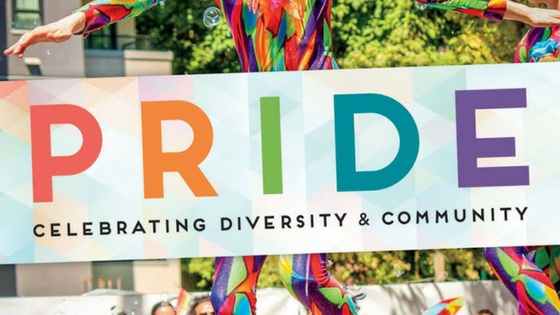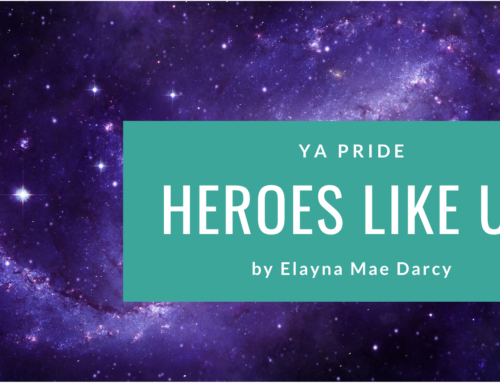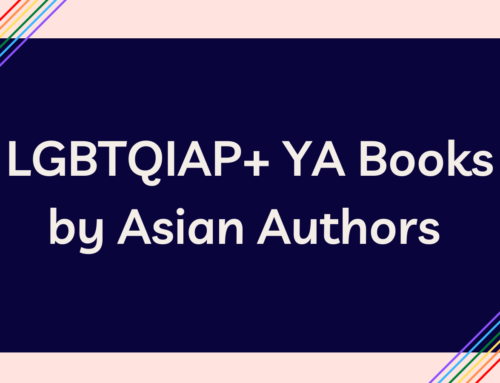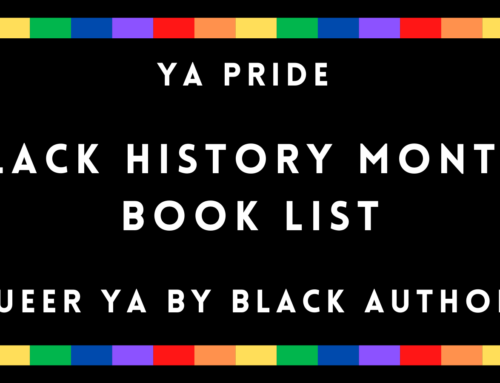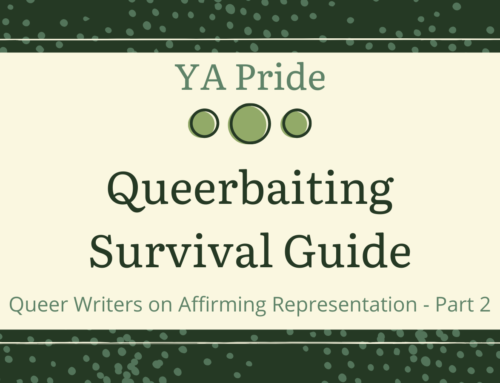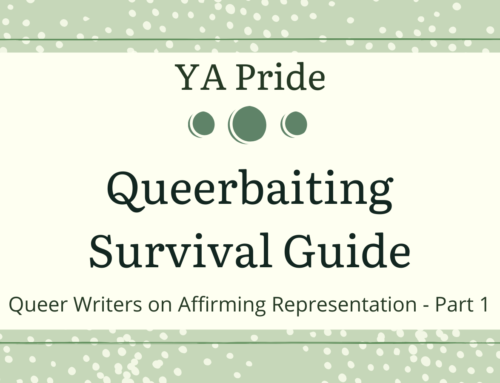Pride Month Blogathon: Day 7 – Introduction to Pride Month Blogathon
For gay, lesbian, bisexual and transgender people and their supporters, June is a month of pride and celebration, and the high point of that month is the Pride Day Parade. Pride Day is a spectacular and colorful event. But there is a whole lot more to Pride than rainbow flags and amazing outfits. So what exactly are we celebrating on Pride Day? How did this event come to be? And what does Pride mean to the people who celebrate it?
Last year at ALA, I got to chat with author Robin Stevenson about her new book Pride. Pride is a non-fiction Middle Grade book that explores the history of pride and what pride means today in an accessible, fun, and informative way. It is one of the most inclusive books that I have read, and is an incredible resource. I highly recommend it for your Children’s Section and/or Middle Grade collections!
Vee: I’m here with Robin Stevenson, the author of Pride and Under Threat and I know a bunch of others but I don’t remember what they’re titled. *laughs*
Robin Stevenson: Inferno is one, that had a lesbian main character.
Vee: Okay, I clearly need to read more of your books. I did read Under Threat and that was great.
Robin: Oh I’m glad you liked it!
Vee: I forgot to bring it with me and I’m so upset. Anyway, thank you for taking the time to do this interview!
Robin: Oh no, thank you! I’m so glad to I finally get to meet you after chatting online– Yeah, it’s great to be face-to-face and have this conversation.
Vee: So your new book Pride is for ages 10-14 or so?
Robin: Yeah, 9+.
Vee: It’s a nonfiction book about the history of Pride. And it’s really cool because as far as I know, it’s one of the only books about Pride for that age range. I was wondering if you could talk a little bit more about why this book was important for you to write, or what gave you the idea?
Robin: I think it was important for me to write in part because I am a parent, and I have a son who’s 12. He was about 10 when I started writing the book and I was very conscious of how little there was out there for Middle Grade. We’re seeing more YA which is great, but very few books with LGBTQ content for Middle Grade and I don’t think that there were any books that we could read together that had any queer content at all other than a few picture books we read when he was small. So I wanted to write it for Middle Grade. There wasn’t really anything out there about Pride at all and I thought it would be interesting to look at a bit of queer history and queer rights and who’s in the LGBTQ community. It actually began because my publisher talked about starting a new non-fiction series about different cultural celebrations– they were talking about doing books on Ramadan, Chinese New Year and Passover– so I had thought maybe we should do one for Pride day. It didn’t end up being part of that series since it’s a bit different, but that was where the idea initially began. It’s interesting because in the process of writing it and all the people I met in the process of writing it and… it’s been only two months since the book came out, but visiting schools and libraries and talking to teens and kids about it, I think it’s more important than I realized when I began writing it. Which has been a really great experience, and it’s been really significant for me. It’s really changed my relationship to Pride in ways that I didn’t anticipate.
Vee: Oh that’s awesome. Your publisher seems really cool by the way.
Robin: They are, I have the best publisher. I am so lucky.
Vee: They were some of the best people who I met here at ALA.
Robin: Yeah, they are just the best group of people. So supportive of Pride and they really get that this book is important and why it’s so important. I really couldn’t have a more supportive publisher.
Add Pride on Goodreads
Follow Robin Stevenson on Twitter
Vee: That’s awesome. So what was the research process like? There’s so much information out there, so how did you decide what to include, what not to include and all that?
Robin: Well it was really interesting because this was my first Non-Fiction book too, right? It was my 20th book, but the others are all novels, so I usually get to make stuff up! So this was like, okay, I actually had to do research for this book. And I mean you do a little for novels but not in the same way. So initially it was a lot reading, watching documentaries, talking to as many people as I could about what pride means to them.
Trying to decide what to include and what to leave out was really hard because it was important to me that the book would talk about the history of pride in a way that was really inclusive, so I wanted to include as many different voices and experiences as I could. So much queer history has glossed over the contributions of trans people, people of color. We often get a very white gay male version of queer history and I didn’t want to repeat that.
Because it’s a kids book, I wanted as much as possible to include as much voices of kids talking about what Pride meant to them so at the end there’s a number of profiles of kids and teens and then shorter notes from both kids and teens so both kids who identify as queer themselves and kids with queer parents and so on, just to include those experiences and keep the book accessible to kids. There’s a lot of complex ideas when talking about LGBTQ identity and I didn’t want to gloss over the complexities, but I also wanted to make sure that a 9 or 10 year old could understand it.
Vee: Right, so it doesn’t turn into heavy queer theory.
Robin: Exactly. So there were a few pieces that initially I wrote and had to be like, okay, so this isn’t a university text, this is for kids. I had to keep it simple and accessible without glossing over or oversimplifying. I didn’t want people to read it and feel like their identity got totally oversimplified right? So trying to find that balance as well. So I think those were the pieces that I struggled with.
Vee: I so appreciate the focus on inclusion, because like, maybe I’m just reading the wrong books, but all the books on Stonewall and history of Pride I’ve read totally erase trans and bi people and people of color and it’s just, like, why? Like what are you? What? So even just flipping through your book was incredible. I mean, there’s one book about Stonewall that uses the word bisexual like once and the word transgender three times and… I can probably find those words on every other page in your book.
Robin: That’s good!
Vee: Yeah, so that was really awesome.
Robin: People were very generous with sharing information and sharing photographs and sharing their experiences so the research was a really enjoyable process, I got to talk to a lot of wonderful people.
Vee: That’s so cool. So, you were talking about school and library visits– could you talk more about those?
Robin: Yeah. I spent a couple of weeks in Ontario and in Quebec visiting schools and libraries and talking to groups of kids and teens about Pride and about the book which was wonderful and which made me realize the importance of the book. Like in one school where there was total silence when I began speaking, people sort of seemed really uncomfortable. One teacher said “we’ve never actually talked about this before” and I said “wow, that’s amazing” and I looked and there was this one girl at the back of the room who was giving me two thumbs up and she had tears pouring down the side of her face-
Vee: Awwh!
Robin: I almost started crying and I just realized that this is still something– I live in a bubble. I live in a bubble with people who talk about this stuff all the time, right? And that’s not the norm for every kid. For many. And that just made me realize how important this is. And this has made me realize how much resistance there is still. I had a visit booked at a library where there was a couple of grade 5-6 classes that were booked to come talk about Pride and at last minute, the principal vetoed the school visit so I showed up to an empty library. And I have never had that happen, in ten years of doing presentations. So I really think there’s something that needs to shift there. A lot of parents do support LGBTQ inclusion, we do want this stuff talked about in our kid’s classrooms but they’re not exactly vocal about it. And I would just love to see it shift to a point where teachers and schools are worried that parents will complain if they don’t cover this stuff. Right?
So I was at a conference recently. It was an LGBTQ youth pride organized conference called “Love is Love”, organized by some teens at a high school GSA, and it was fabulous. They put on a full-day event and it was great. And one student put up her hand– I had just done a talk on history of Stonewall and Pride– and she put up her hand and said “I didn’t know any of this but why did I have to come here to learn this? Why isn’t this taught in our schools?” And it should be. It really should be, but I think there’s a huge shift that needs to happen where it’s the norm to include this. And not something where teachers feel they need to send home permission slips or that they have to worry that they will have parents complain. So I’d like to see all the parents who support it tell every single one of their kid’s teachers that they want to see this stuff included.
Vee: That is an excellent perspective. Yes yes yes.
Robin: So let’s make that happen!
Vee: Could you talk a bit more about, not the book you were talking about Under Cover, but-
Robin: Inferno?
Vee: Yeah
Robin: Inferno is an older novel of mine, it came out in 2009. It was on the Rainbow List in 2010, so yeah, it has a queer protagonist. Gosh, I haven’t talked about that one in a long time. So what was that book about? What was my spiel for it? haha.. it was interesting because when I was writing it, which wasn’t that long ago, there wasn’t as much LGBTQ stuff published
Vee: When was that?
Robin: I was starting to write it around 2007. And I remember my partner saying– she asked about the book, and I said oh it’s a queer main character and blah blah blah– and she said “do you wanna get published?” So her sense at the time was that it would be a real barrier, you know? And I think even in the past few years since it’s been published that we’re seeing more. I don’t know if people would still really be asking that question. In such a short time… But yeah it’s about a girl who’s under a lot of pressure from her mom to conform to a certain image of femininity which doesn’t fit who she is, and she’s had a relationship with a girl at school who everyone knows is her best friend, they weren’t out about it, and her friend didn’t want to be out about it, so her friend’s moved away and they’ve broken up so she’s really grieving the loss of that relationship but isn’t able to talk to anyone about it
Vee: Right.
Robin: Since she wasn’t able to tell anyone, and she’s just changed her name from Emily to Dante, a reference to Dante’s Inferno since her school is the ninth circle of hell in her mind, and she’s gone back back to school and then she meets this girl who’s hanging around outside the school who’s handing out flyers that say “school or jail, can you see the difference?” and is protesting the idea of compulsory education and is sort of at the heart of this activist group and her name is Parker. And Dante is really drawn to her so she starts talking to her, and hanging out with her and her group of friends. So that’s the starting point for that.
Vee: I don’t think that’s on my TBR list, so I’m definitely going to fix that. Is there anything else you’d like to talk about?
Robin: Oh gosh, I have questions for you! But I know you’re supposed to be interviewing me so I’m kinda just holding on to my questions. Uhm, no, it’s just really good to meet you. I’ve enjoyed your tweets and your blogging, I can’t believe how much you’ve got done in the last while. It’s a full-time job that you’re doing. And I’m sure there’s a lot… I mean, I know I find it enormously helpful so I’m sure there’s a lot of people who you’ve never heard from, that it reaches more people than you know. I was in Quebec and a librarian was asking me about my recommendations for LGBTQ books and I was like this is who you need to follow. It’s a great resource you’ve created.
Vee: Ah that means so much! Thank you for this interview and thank you for that.
Robin: No thank you! And thank you for taking the time for this interview.
